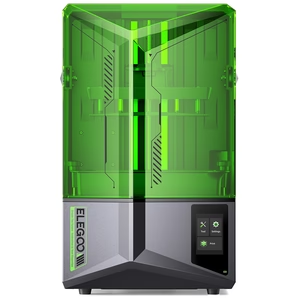4D printing technology represents a significant leap from traditional 3D printing, introducing a transformative approach that incorporates time as the fourth dimension.
This advanced technology allows for the creation of objects that are not only printed but can evolve and adapt over time. This overview delves into the capabilities of 4D printing, the smart materials it utilizes, its applications across various industries, and its potential future developments.
What is 4D Printing Technology?
4D printing technology utilizes self-assembling materials to create programmable matter that responds to environmental stimuli, transforming in shape, size, or functionality after the initial printing process.
These dynamic objects, often described as "active origami," highlight the use of programmable materials that usher in a new era of manufacturing with far-reaching implications.
Intelligent Materials Driving Innovation
At the core of 4D printing technology are smart materials such as hydrogels and shape memory polymers. These materials are capable of reacting to changes in temperature, light, and other environmental factors, enabling printed objects to change according to pre-programmed instructions.
The development and refinement of these materials are crucial for advancing 4D printing innovations and ensuring their functionality across different applications.
Expanding Applications of 4D Printing
The applications of 4D printing are broad and impactful, spanning several key industries:
4D Printing in Medicine: From adaptive medical implants that can evolve to better fit within the human body to scaffolds that change to aid cell growth, the medical applications of 4D printing offer revolutionary possibilities for patient-specific treatments.
4D Printing in Construction: Imagine self-assembling structures or building components that adapt to environmental conditions, enhancing sustainability and efficiency in construction processes.
4D Printing in Electronics and Robotics: Flexible electronics and soft robotics components benefit from 4D printing, gaining the ability to adjust their form and function in real-time, which opens up new avenues for innovation and application.
These examples illustrate just a fraction of what is possible with the advanced capabilities of 4D printing technology.
4D Printing and Sustainability
One of the most promising aspects of 4D printing is its potential contribution to sustainability. The ability of 4D printed objects to adapt and change reduces the need for multiple objects by fulfilling various functions over time, thereby reducing waste and increasing the lifespan of products. Moreover, many of the materials used in 4D printing are designed to be biodegradable or recyclable, aligning with eco-friendly practices and supporting sustainable development goals.
Future of 4D Printing
The future of 4D printing looks promising as researchers continue to explore the limits of what these technologies can achieve.
With each innovation, from the best resin 3D printer of 2024 to new formulations of programmable materials, we come closer to a world where 4D printing technology is commonplace.
As the precision of 4D printers improves and the cost of production decreases, these technologies are expected to become more accessible to industries worldwide. Ongoing research is also paving the way for new applications in sectors like aerospace, where the adaptability of materials can lead to more efficient, lighter, and safer designs.
Conclusion
The journey of 4D printing technology from a conceptual marvel to practical applications is ongoing and full of potential.
With continued research and development in smart materials and printer technology, the future of 4D printing will likely transform how we think about manufacturing, product lifecycle, and resource efficiency.
The next few decades may well witness 4D printing becoming as transformative to the industrial landscape as 3D printing has been in recent years. This dynamic field promises to redefine the boundaries of what's possible in the modern manufacturing arena.



















































































































